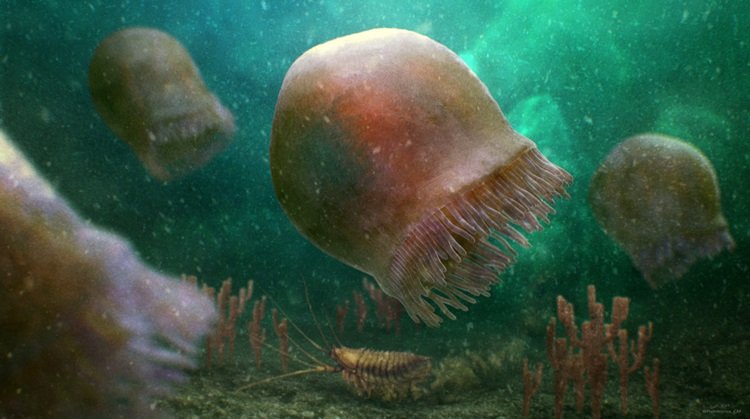These 508-million-year-old rare fossils were found in Canada
These rare fossils aged 508 million years may be the oldest swimming jellyfish that were recently discovered by paleontologists in Canada.
Jellyfish are among the sea creatures that would often bring wonder to many people. Different species have been discovered over the years and for many people their different colors, shapes, and sizes are amazingly beautiful.
In a recent discovery, based on an article in Smithsonian Magazine, paleontologists named the umbrella-like sea creature Burgessomedusa phasmiformis. It is described as a creature that is seven inches across and draped with more than 90 short tentacles trailing beneath.

Experts unearthed the rare fossils in the mountains of British Columbia. The fossils supported that there were prehistoric jellies that floated over reefs and they would use their tentacles to capture prey swimming in the water, pretty much just like the living jellyfish now.
Royal Ontario Museum’s paleontologists were looking for fossils of early animal life among the layers of the Burgess Shale back in the 1980s and 1990s. This is where fine-grained rocks that contain reef life from more than 508 million years ago were found.
“Sometimes in paleontology, you know a great discovery as soon as it’s made in the field,” paleontologist and study author Joseph Moysiuk of the Royal Ontario Museum said. He said that these rare fossils “are quite large and obvious, even when they’re covered in mud.”

It was easy for paleontologists to say that they have found the remains of the early jellyfish. However, years were taken before a formal description of the fossils was undertaken. Then, the new identification was published on August 2023 in Proceedings of the Royal Society B.
The team of paleontologists was able to locate 182 fossils of Burgessomedusa in a particular spot called the Raymond Quarry. These rare fossils were quite difficult t find. “Is it that they tended to live high in the water column, out of reach from the mud flows that buried these ancient seafloor communities?” Moysiuk said.
